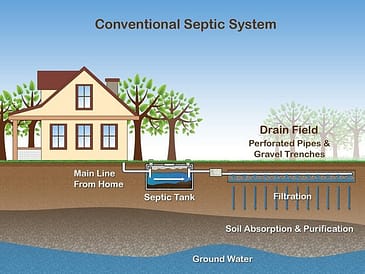Introduction to Septic Systems in the US
Septic systems manage household wastewater in rural and suburban areas across the U.S. Proper regulation ensures these systems protect public health and the environment. Regulations vary by state and local jurisdiction but are guided at the federal level by the EPA.
Overview of Federal Regulations
The Environmental Protection Agency (EPA) provides oversight through the Clean Water Act and the National Pollutant Discharge Elimination System (NPDES). While the EPA doesn’t directly regulate individual systems, it supports state programs through funding and national water safety standards.
State-Level Regulations: Why They Vary
States like California and Texas have drastically different rules due to Home Rule powers. Regulations are shaped by local climate, geography, population density, and environmental risks.
Permitting and Installation Requirements
- Permit from the local health department
- Site evaluation and soil testing
- Licensed septic system installer required
Septic System Design Standards
Designs are approved based on soil permeability, system type, and safe distance from wells and waterways. Aerobic systems and advanced technologies require special permits.
Inspection and Maintenance Rules
States like Maryland mandate regular inspections and pump-outs every 3-5 years. Some regions require digital record-keeping and contractor registration.
Septic System Replacement and Upgrades
Systems must be upgraded if they’re failing or if the property is expanded. Rebates and grants are available for environmentally friendly upgrades in many states.
Rules on Septic System Additives and Chemicals
Most states ban harmful chemical additives. Only approved biological products may be used, and misuse can lead to system failure.
Failing Septic Systems: Legal Consequences
Legal penalties range from fines to mandatory property evacuation. Some countries monitor compliance aggressively and maintain failure databases.
Role of Local Health Departments
Local health departments approve installations, enforce codes, inspect systems, and maintain records. Florida is a notable example of proactive local regulation.
Rural vs Urban Regulation Differences
Rural areas face oversight and access challenges, while urban areas enforce stricter codes due to population density and environmental risks.
Real Estate and Septic System Compliance
Inspections are often required when selling a property. Title 5 in Massachusetts is a key example of how real estate laws intersect with septic regulation.
Financial Assistance and Grants
- USDA Rural Development Grants
- Clean Water State Revolving Fund
- State low-income septic assistance programs
Future Trends in Septic System Regulations
New regulations include climate-adaptive designs, smart monitoring, and stricter nutrient pollution controls. Public participation is expected to grow in importance.
Case Study: Successful Septic Regulation Program
Massachusetts’ Title 5 shows how inspection mandates and community involvement can improve water quality and compliance.
Public Awareness and Education
Programs like Septic Smart educate the public about maintenance, common issues, and proper system usage to reduce environmental impact and repair costs.
Frequently Asked Questions
- Q: Are septic regulations the same in every state?
A: No, they vary widely by state and county. - Q: Do I need a permit to install a septic tank?
A: Yes, permitting and soil testing are usually required. - Q: How often should tanks be pumped?
A: Every 3-5 years, depending on size and usage. - Q: What if my septic system fails?
A: You may face fines or mandatory system repairs. - Q: Are septic additives useful?
A: Some are approved, but many can harm your system and are banned. - Q: Are grants available?
A: Yes, many federal and state programs offer funding support.
Conclusion: Staying Compliant in 2025 and Beyond
Understanding septic tank regulations in the US is essential for responsible homeownership. Keep your system compliant to protect your property and local water quality. For more information, visit the EPA’s SepticSmart site at epa.gov/septic.




